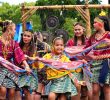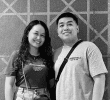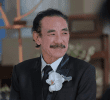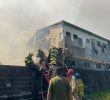The city has become so many different things to so many different people. From merely the Nueva Guipuzcoa province, Nueva Vergara city, for the first Spaniards who arrived here, to the Japanese’ “Little Tokyo” before the war, it has become an eco-tourism destination, offering a host of packages featuring such adventure sports like scuba diving, mountain climbing, spelunking, kayaking, caving.
By Germelina A. Lacorte
davaotoday.com
DAVAO CITY — On a wall of one of the galleries of the Davao museum is a sepia photograph of the birth of the city now known as Davao, a place easily indicated on the travelers’ map by a dot near the deep blue waters of the Davao Gulf.
Culled from the collections of Davao historian Ernesto Corcino, the picture shows women in terno , men in Americana, flanked by soldiers in uniform looking out to a crowd gathering outside what is now the City Hall building, where both the American and Philippine flags were unfurled.
But this is a sweltering morning of October 2005. A traveler, who had earlier entered the Davao museum, paid the 100-peso entrance fee the museum asks from tourists, now stands gazing at the picture with an eye for details and an unquenchable thirst for something beyond her grasp.
She notes that the picture was taken on March 1, 1937, when the country was still under the American Commonwealth regime, which explains the American flag on the picture. Roughly 89 years after Spain conquered Davao Gulf, and a couple of years before the Japanese attacked Pearl Harbor that started the second World War, bringing the Japanese imperial army to Davao shores.
The traveler is moved. But as she allowed eyes to look at the picture longer, the traveler gets the vague sense that something is missing; that somehow, the photograph is excluding something. She turns away and her eyes stop at the next frames on the adjacent wall.
“When Spain conquered the Davao Gulf in 1848, the region has probably the most number of ethnic tribes in the country, according to historical accounts by Macariu Tiu, a Davao writer and professor of history,” the traveler reads the writings pasted on the next wall.
“The current count of Davao’s ethnic tribes run up to 15, and that is still subject for study.”
Reading this, the traveler finds herself turning back to Corcino’s picture again, searching for traces of the tribes among the faces on the picture. Where were Davao’s original inhabitants during the birth of the city?
But the more that she stares at the picture, the more those faces freeze in time and blur, the more that that thing she’s looking for eludes her, the more she feels their absence.
Confused, the traveler takes a couple of steps away, bumping into a curious wooden thing in a corner near the gallery entrance. A caption indicates it is called the “tambalingo” or “zabanda,” a Bagobo woodcarving of goddesses.
The astute traveler gasps for she feels that in contrast to that picture of terno -wearing crowd, she at last stumbles upon something coming from the land and its people. For she knows that Bagobos were among the original inhabitants of the land. In her excitement, she asks the museum staff what that whole piece of artifact is all about. But the museum staff doesn’t know. The museum staff explains to the wary traveler that most artifacts in that museum are loaned out only from private collectors, who must have picked or bought that thing up from the tribe.
The traveler is not the kind who easily gives up. It still takes time for her to finally stumble upon the fact of the coming in of migrants and settlers and the Spaniards in this part of Mindanao, and to understand that this did not happen overnight, in one peaceful transition.
THIS is the traveler’s welcome to Davao city, estimated population: 1.4 million, based on the 2003 national census survey; land area, 244,000 hectares of largely agricultural land.
Long before the city was groomed one of the country’s premier tourism destination, a gateway to the East Asean Growth Area (Eaga), it has been a coveted destination of foreign powers since over a hundred years ago.
Now, the city has become so many different things to so many different people. From merely the Nueva Guipuzcoa province, Nueva Vergara city, for the first Spaniards who arrived here, to the Japanese’ “Little Tokyo” before the war, it has become an eco-tourism destination, offering a host of packages featuring such adventure sports like scuba diving, mountain climbing, spelunking, kayaking, caving.
From malls and markets, museums, galleries, to beach and mountain resorts the place offers array of things that will make unsuspecting visitors part away with their hard-earned dollars. Hotels, resorts and restaurants rise in number, changing the city’s landscape.
Over half a million tourists have been coming here each year, roughly 10 per cent of them foreigners.
Some of them are astute travelers who have a way of seeing things ordinary tourists take for granted. They scan traces of the past to understand the present, know that pictures can speak a thousand words, but can be silent about some crucial things. They’re the kind who go beyond the artificial confines of malls and resorts to explore noisy public markets that never sleep, slurp on a soup of bulalo , or munch on street food while walking along the crowded streets, gets the thrill out of riding the jeepney or trisikad or in finding some cheap lucky ukay-ukay (used clothes).
They hear more about the unwritten stories of Davao, flowing not from dead museum walls and mute pieces of artifacts but from the everyday lives of the people. (Germelina A. Lacorte/davaotoday.com)










